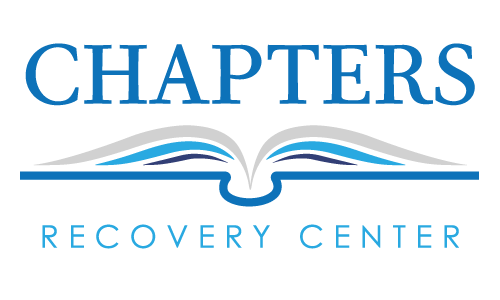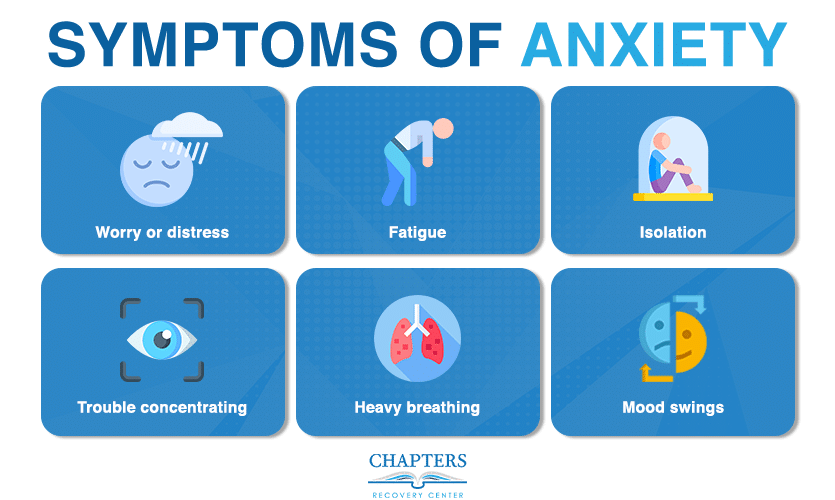August is approaching and you are about to start the next phase of your life: college. College is where all the suppressed desires are let loose. No parental supervision, no nagging teachers, and all the vices one cares to try can be found right on campus or within the surrounding environment. This is the perfect time to try out everything you’ve been seeing on movies and TV your entire life.
Or is it? The dark underbelly of these activities that is rarely exposed is the rampant number of college students who develop alcohol dependency, drug addictions, and other various substance use disorders. Not to mention the impact on your academics, declining sports performance, risk of dropping out, and the genuine threat of expulsion or hospitalization.
Chapters Recovery Center has you covered. This article presents a guide into how to spot and avoid peer pressure as you venture into college, and also how you can get help should you have already succumbed to it.
Jump to Section
ToggleWhat is Peer Pressure?
Peer pressure refers to the method by which friends or associates within the same social group influence other members to perform certain activities. The activities can be either positive or negative, though peer pressure is normally used to describe socially unacceptable behaviors such as drinking alcohol or experimenting with drugs.
What are the types of peer pressure?
Peer pressure can take on a positive or negative aspect. The following are various types of peer pressure a person can face:
Spoken vs. Unspoken Peer Pressure
Spoken peer pressure is when someone verbally coerces another person towards a particular activity. For example, one friend persuades another to imbibe alcohol by saying, “Come on, one sip won’t hurt.”
With unspoken peer pressure, however, behavioral cues within a group of peers are used to influence someone towards a particular act. A person could be surrounded by friends who are drinking, and though no one directly tells this person to drink, they may feel pressured into doing so to fit the group dynamic.
Direct vs. Indirect Peer Pressure
When a person employs nonverbal or verbal actions to convince someone to do something, this is known as direct peer pressure. For instance, one friend could hand another an opened can of beer, and the receiving person is now on the spot to decide how they’re going to act.
Indirect peer pressure does not involve being singled out. Rather, an environment is created that can influence a person towards certain activities or behaviors. Being at a frat or sorority party where everyone is drinking can pressure someone into feeling they have to drink to belong at the party, even though no one may have directly told them to drink.
Positive vs. Negative Peer Pressure
Peer pressure can take on either a positive aspect or a negative one. Positive peer pressure influences a young adult to participate in productive and beneficial behaviors. For example, peers influence a person to study more, exercise, eat healthier, or even enroll in extracurricular activities.
Negative peer pressure pushes a person to engage in adverse behaviors or activities to fit in with a particular group. Negative peer pressure often pushes people to drink, use drugs, and participate in risky sexual behaviors.
How does peer pressure affect young adults?
Peer pressure still affects young adults. In many instances, it can be more intense than during the adolescent years as a person had ditched most of their childhood friends are now in college forming the bonds that will last them a lifetime.
According to the Bureau of Substance Addiction Services fiscal year 2022 closed with 103,597 admissions to substance abuse treatment centers in Massachusetts. 25,883 (25%) of these admissions were young adults ranging from 18 to 25 years of age. Alcohol (38%), heroin (29%), marijuana (14%), and cocaine (6%) were flagged as the most used substances.
The National Center for Drug Abuse Statistics shows that Massachusetts teenagers are above the national average risk of using drugs by 33.37%. The report further shows that Massachusetts places 7th in the nation for teenage drug use, with 12.8% of teenagers reporting drug use within the last 30 days.
What is meant by “risk vs. reward” of youth peer pressure?
A reward is the feeling of satisfaction a person gets from acting, while risk refers to the fear of losing something valuable. The developing brain of a young adult is more susceptible to the effects of peer pressure than a grown adult’s.
Bigger risks flood adolescent brains with exciting stimulation but with the possibility of forming addictions, suffering injuries, contracting diseases, facing legal trouble, and death.
How does peer pressure contribute to substance abuse?
The adolescent years leading no into the early twenties are an important developmental time in any person’s life. These are the years when habits are learned and ingrained and form the pattern for how a person will do things from then on. The decisions and actions made at this point in life could have ramifications that last for decades.
Perceptions of Risk
Studies have shown that a person’s perception of danger with cannabis use is intertwined with their perception of their peer’s use of marijuana and their perception of their peer’s disapproval of marijuana use. This shows that a person’s peer’s influence holds greater sway over their actions than a parent or sibling’s influence.
Gateway to Deeper Misuse
Adolescents’ feelings towards using cannabis use can assay or lead to more harmful choices. SAMHSA reports find that cannabis use leads to the development of other SUDs (substance use disorders) such as alcohol, tobacco, and other illegal drugs. This study showed that young adults with close friends that smoke or drink are more likely to follow suit. However, those with close peers who frowned upon marijuana were 87% less likely to use it.
What are the various ways people experience peer pressure to use substances?
Pressure to engage in risky behaviors and experiment with drugs and alcohol batters teens and adolescents from every angle. Access to licit and illicit substances is so available it’s almost a joke. The temptation to take that first step lurks around every doorway and alleyway and aisle of the library. Peer pressure can range from subtle to outright demanding.
At Home
Many adolescents are reared in homes and neighborhoods where adults and teenagers use alcohol and drugs recreationally. This leads to increased interactions where a person can be offered a sip of a drink or a puff of smoke.
At School
School is often the second most influential place when it comes to peer pressure to try alcohol or drugs. The deep-rooted desire to be seen as an equal by a person’s desired group of friends makes it very easy for a young adult to be swayed into using drugs and/or alcohol. Studies on alcohol indicate that heavy alcohol use is a heavily popular activity worldwide.
At Work
Adults are not unsusceptible to substance use and peer pressure. Imbibing alcohol is socially acceptable, and the temptation to partake will carry on throughout our whole lives. Knowing your way around various wines and whiskeys is many times crucial during business discussions and fostering professional relationships.
Among Males
From social media to videos to ads, drinking is ingrained into young males as the epitome of masculinity. “Cracking open a cold one with the boys” is a phrase used so much that even people who abstain from drinking can picture themselves in such a situation every time the words are uttered.
Men are shown drinking in everyday situations to such an extent that some young adults cannot envision an activity they can participate in that would not include alcohol of some sort.
Feeling “Outside”
Teetotalers (people who abstain from drinking alcohol) often face feelings of being left out or judged by drinkers. Socializing with people who drink becomes increasingly difficult, especially when faced with people who believe, “I don’t trust anyone who doesn’t drink.”
How can people combat peer pressure and substance abuse?
Young adults can turn to their doctor in the battle against substance abuse and peer pressure. Post-adolescents view their medical professionals as authoritative sources of information and are more willing to open up about substance use with them. Young adults rely on their discussions with their doctors to remain confidential, and this presents the doctors with a unique opportunity to discuss substance use and peer pressure with them.
Screening
Substance use screening as a part of an adolescent’s annual physical exam is recommended by the AAP. Teenagers and young adults who suffer from mental health disorders such as anxiety or depression should also undergo substance use screening as these conditions increase the risk us substance abuse behaviors developing.
Brief Intervention
In cases where substance use screening reveals the presence of drugs in the system, a brief intervention can be provided by the medical doctor. This intervention is a step towards persuading the young adult to change their behavior. Brief interventions have been shown to increase quit rates among infrequent or new users. Higher-frequency users most likely need a referral to a treatment center.
School Experience and Extracurricular Activities
Young adults that willingly participate in extracurricular activities and find school meaningful are less likely to experiment with drugs. Parents, guardians, and other influential people can work to increase a young adult’s engagement in school activities and community programs.
Peer Education
Almost everyone can remember the D.A.R.E. (Drug Abuse Resistance Education) programs that frequented elementary schools. Such educational programs effectively leverage peer pressure against alcohol and/or drug use among adolescents. Increased resistance to experimenting with drugs is shown by teens aged 14-16 within such programs.
Limiting Interactions with Negative Peer Pressure
Strategically choosing who you decide to associate with can be a practical method for you to avoid the wiles of peer pressure. Surrounding yourself with peers who accept, respect, and encourage your decisions to abstain from certain behaviors can boost your resolve to refrain. Participation in religious groups can help push you away from drugs, alcohol, or negative peer pressure as well.
When You Can’t Avoid Peer Pressure
Your friends can be very manipulative and refuse to accept ‘no’ as an answer. There are five escape routes and subterfuge to sidestep such unavoidable situations, as recommended by the National Institute on Drug Abuse.
The five strategies are:
- Become the designated driver. Your friend will appreciate arriving home safely after a wild night and will be thankful that you remained sober.
- “Slight of hand”. Carry your bottle or glass of water, juice, or soda with you so you’ll already have a drink when asked.
- Point fingers. Point away at your parents, spouse, or a random person and inform your peers that they will check on you to see if you have been drinking.
- Blame sports or exams. Express concerns that you must stay sober for an upcoming exam, sports event, or social function.
- Move around. Mingle with other people, become fascinated by some random activity, or “dip the scene” and go home or somewhere else.
Receive Help for Addiction at Chapters Recovery Center
If peer pressure has led you or a loved one down the wrong road, let Chapters Recovery Center guide you back to the right path. Our treatment methods combine psychotherapy with medication to combat addictions and mental health issues among young adults. Our professional medical team will be by your side, walking each step with you on your road to recovery. Contact us today to speak to our expert admissions team and take back control of your life.
References






